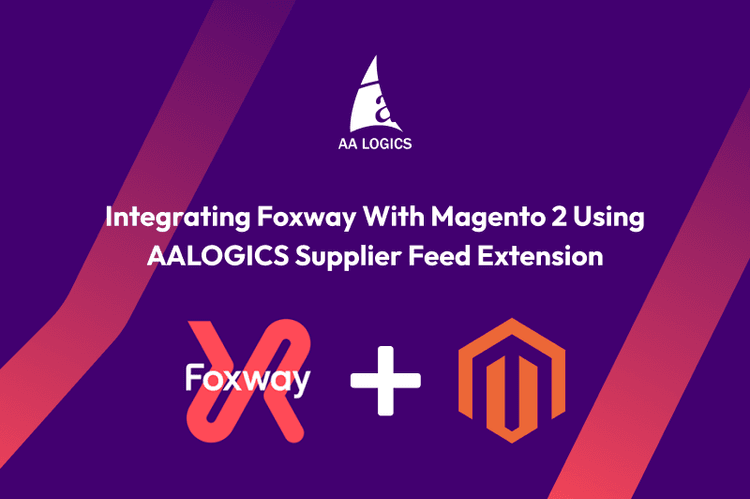Odoo 19 AI Features — From Automation to Autonomous Decisions: The Next Generation ERP Blueprint

Odoo 19 AI Features put intelligent automation where teams already work — turning repetitive tasks into guided actions and, when safe, autonomous decisions.
This blueprint explains what’s new in Odoo 19, how it compares to Odoo 18, measurable ROI levers, and a migration readiness audit tailored for enterprise teams.
Read on for executive KPIs, rollout phasing, and the vendor questions you must ask.
Odoo 19 adds prompt-based Server Actions, contextual AI assistants, document intelligence (OCR and auto-routing), call transcription and summaries, and predictive models for sales and inventory.
Introduction: Why AI now matters for ERP
AI in ERP reduces cognitive load, accelerates repeatable decisions, and improves predictability — three things investors and boards care about.
- Assist: AI drafts text, summarizes records, and suggests next actions.
- Automate: Natural-language Server Actions convert intent to automation.
- Predict: Forecasts and anomaly detection support finance and operations.
Primary concerns before rollout: governance, data residency, auditability, and migration risk.
What is Odoo?
Odoo is a modular ERP platform with apps for CRM, Sales, Inventory, Manufacturing, and Accounting. It ships as SaaS or self-hosted editions.
Why Enterprises Choose Odoo:
- Single data model across apps.
- Studio low-code for fast configuration.
- Large partner and module ecosystem.
This modular model makes platform-level AI effective: one intelligent capability can act across sales, finance, and ops.
What’s new in Odoo 19?
Odoo 19 focuses on practical intelligence — features that reduce manual work and speed decisions.
Key Highlights:
- AI App / Top-bar assistant — quick prompts and context helpers.
- AI Server Actions — natural-language automations.
- Contextual AI Agents — role-based assistants for sales, finance, support.
- Document intelligence — OCR, auto-classify, and route documents.
- Communications — call transcription and automated summaries.
- Predictive analytics — demand forecasting, lead scoring, anomaly detection.
These are platform-level capabilities admins can configure inside Studio and Server Actions.
Odoo 19 vs Odoo 18 — What Changed
If Odoo 18 polished UX and performance, Odoo 19 embeds intelligence at the platform level.
Quick Comparison:
- Automation: Odoo 18 = rule-based. Odoo 19 = prompt-driven Server Actions.
- Assistance: Odoo 19 adds in-context copilots; Odoo 18 did not.
- Documents & communications: Odoo 19 includes transcription and OCR; older setups needed connectors.
- Developer workflow: Studio + AI fields reduce customization debt versus heavy module coding.
Migration note: inventory custom modules, Studio changes, and API hooks must be audited. Expect testing and regression work.
Deep Dive — AI Features That Matter To Enterprise Buyers
These features move organizations from automation to practical autonomy while keeping humans in the loop.
AI App & Prompt-Based Automation
- Business users can write plain-English prompts to create automations.
- Example: “When lead probability ≥ 80%, create opportunity and assign owner.”
- Benefits: fewer dev cycles, faster time-to-value, less bespoke code.
Governance Essentials:
- Require approval workflows for any Server Action.
- Maintain an audit trail with “who approved” and test cases in the release pipeline.
Odoo AI Assistant & AI Agents
- Assistants summarize chatter, draft emails, and recommend next steps.
- Role-based agents limit data exposure (sales see sales only).
- Use-case: a finance agent suggests reconciliation entries or flags anomalies.
Operational Controls:
- Confirm where inference runs (on-premise or third-party cloud).
- Configure access and logging per role.
Communications: Transcribe, Translate & Summarize Calls
- Recorded calls become searchable transcripts, create Chatter notes, and trigger follow-ups.
- Benefits: faster SLAs, fewer missed actions, traceable audit trail.
Compliance Tip:
- Ensure consent for recordings and store transcripts under appropriate retention policies.
Predictive Analytics: Forecasts For Sales, Inventory, & Procurement
- Built-in models for demand forecasting, lead scoring, and anomaly detection.
- Outcomes: fewer stockout, better inventory turns, more predictable revenue.
Practical Advice:
- Treat models as decision support; keep humans in the loop for high-risk decisions.
- Continuously validate models against company data.
AI-enhanced CRM & Lead Generation
- Automated lead scoring, nurture content suggestions, and next-best-action prompts.
- Track AI actions as metadata so marketing analytics can measure lift.
Testing Approach:
- A/B test AI-suggested nurture flows against baseline before scaling.
Document Intelligence & Automated Data Capture
- OCR and auto-classification route invoices and receipts and extract fields into records.
- Benefits: faster procure-to-pay, reduced manual indexing, lower error rates.
Validation:
- Implement mapping rules and periodic checks to prevent classification drift.
Security, Compliance & Data Governance for Odoo 19 AI
AI introduces new data pathways. Treat AI features like integrations and apply the same controls.
Must-Have Controls:
- Model provenance: Which models are used and where does inference happen?
- Data residency: Ensure PII stays within allowed geographies.
- Auditability: Log prompts, model outputs, approvals, and automated actions.
- Access controls: Implement role-based agents and least-privilege policies.
For regulated industries, include AI features in SOC/ISO evidence and change-management processes.
Business Outcomes & Measurable KPIs
Turn product features into finance-friendly metrics to build an investor-ready case.
Key KPIs to Track:
- Time-to-close: measure quote-to-order reduction.
- Manual touchpoint: count human steps per process and reduce by target percentage.
- Inventory turns: improve through forecast accuracy.
- Lead-to-opportunity conversion: measure lift from AI scoring.
- AR / DSO: reductions through automated reconciliations.
Model Approach:
- Build a 12–24 month NPV with base and conservative scenarios.
- Include sensitivity to token/compute pricing and adoption rates.
Migration & Rollout: Readiness Audit, Phasing, & Avoiding Rework
A phased approach reduces risk, limits rework, and protects ROI.
Recommended Phases:
- Discovery (4–6 weeks): inventory custom modules, Studio fields, integrations, and data quality.
- Pilot (8–12 weeks): 1–3 teams, 2–3 modules; measure pilot KPIs.
- Scale (3–6 months): phased by business unit with training and adoption programs.
- Optimize (ongoing): AI tuning and continuous validation.
Red Flags to Watch:
- Heavy, untested custom modules.
- Brittle third-party integrations.
- Missing API documentation.
For SaaS customers, confirm feature gating and upgrade windows. Self-hosted teams must plan regression testing and compatibility checks.
Readiness Audit Checklist
- Inventory: custom modules & Studio changes.
- Data quality: master records score.
- Integration map: API versions and owners.
- Tests: automated test suites and rollback plan.
- Security: PII handling and compliance.
- Training: role-based agent playbooks.
- Pilot KPIs and success thresholds.
- Vendor SLAs and escalation paths.
Rollout Phasing (Sample 6–9 Month Plan)
- Month 0–1: Discovery and baseline KPIs.
- Month 2–3: Pilot (sales + finance) — validate automations.
- Month 4–6: Core rollout (inventory, procurement).
- Month 7–9: Scale, tune models, and run adoption campaigns.
Operational Cadence:
- Two-week sprints for AI tuning.
- Monthly KPI reviews with stakeholders.
Why Odoo ERP (with AI) Beats Other ERPs
Practical Advantages:
- Modularity: pick only the apps you need and reduce lock-in.
- Studio + AI fields: reduce customization debt and long-term maintenance.
- Platform-level AI: fewer bolt-ons and a consistent user experience.
- Faster time-to-value: particularly for mid-market and growing enterprises.
Caveats:
- Vertically mature vendors may still have deeper domain-specific features.
Verify independent software vendor (ISV) readiness for industry-specific needs.
What to Ask Your Vendor: Procurement & Vendor Evaluation Checklist
Ask these questions early in procurement to reduce surprises.
Must-Have Questions
- Which models power AI features and where does inference occur?
- What audit logs capture prompts and automated actions?
- How is PII handled and where is data stored?
Nice-to-Have
- Fine-tuning services and custom models.
- Predictable token/compute pricing estimates.
- Change-management and training support.
Require vendor responses in writing and include them in SLA negotiations.
Cost Model & TCO Considerations
Model one-time and recurring costs to present a clear financial case.
Cost Buckets:
- Licensing and SaaS fees.
- Migration and development hours.
- AI compute / token costs.
- Training and support.
- Ongoing optimization and model validation.
Modeling Tip:
- Amortize one-time costs over 36 months.
- Present base-case and conservative-case NPV to finance.
Conclusion & Recommended Next Step
Odoo 19 AI Features change ERP economics by turning automation into contextual, auditable actions and practical predictions. The work for CTOs and CFOs is straightforward:
- Validate governance, data residency, and audit controls.
- Pilot with clear KPIs and success thresholds.
- Scale with a phased rollout to avoid rework.
If you want a vendor-neutral readiness check and migration plan, book a Readiness Audit with your implementation partner to map custom modules, quantify TCO, and design a phased rollout that protects ROI.
Frequently Asked Questions
What are the core Odoo 19 AI features?
Prompt-based Server Actions, in-context assistants, document intelligence, call transcription, and predictive models.
How is Odoo 19 different from Odoo 18?
Odoo 19 embeds platform AI (assist, automate, predict); Odoo 18 focused on UX and performance improvements.
Will AI features affect security and compliance?
Yes — implement data residency, audit trails, and role-based access before production.
How long does a typical enterprise rollout take?
Expect 6–9 months (Discovery → Pilot → Scale → Optimize).
Does Odoo 19 require custom development for AI?
Many features are low-code/no-code, but integrations and vertical needs may still require dev work.
Should we keep humans in the loop?
Always — use AI as decision support and set escalation rules for exceptions.
Featured Articles

Automating Magento 2 Product Imports with BarcodeLookup API & Supplier Feed Extension
Read More
Magento 2 Product Import Guide: Integrating Foxway with Magento 2 Using AALOGICS Supplier Feed Extension
Read More
How Modaestile Launched a Fully Functional Mobile App in Record Time — Without Expensive Custom Development
Read More
What’s Changing in Digital Marketing Right Now — And How Smart Brands Are Adapting
Read More